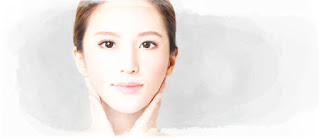How To Know Your Skin Type
Skin type could simply be defined as the characteristics that makes up your skin. Basically, there are 4 different skin type ( Oily skin, dry skin, combination skin and sensitive skin types).
Lets see two methods on how to determine your skin type
1. The Bare-Faced Method
Cleanse your face thoroughly with a mild cleanser and gently pat dry. Leave skin bare (and do not apply any additional moisturizers, serums or treatments). After 30 minutes, examine your cheeks, chin, nose and forehead for any shine. After another 30 minutes, evaluate whether your skin feels parched, especially if you smile or make any other facial expressions. If your skin feels tight, your skin is likely dry. If there is noticeable shine on your nose and forehead, your skin is mostly likely normal/combination. If there is shine on your cheeks in addition to your forehead and nose, you most likely have oily skin.
The Blotting Sheet Method
This method is much faster and often an excellent differentiator between oily and dry skin types. Gently pat a blotting paper on the different areas of your face. Hold the sheet up to the light to determine how much oil is visible. If the sheet picked up little to no oil, you most likely have dry skin. If the blotting sheet reveals oil from the forehead and nose areas, your skin is normal/combination. Finally, if the blotting paper is saturated with oil, it is extremely likely that you have oily skin.
Skin Types
DRY SKIN
Dry skin can feel tight throughout the day, and may experience noticeable flaking. Dry skin is largely due to genetics, environmental factors such as lifestyle & diet, hormonal changes, and climate. Dehydration is also a leading cause of dry skin, so drinking plenty of water and avoiding diuretics like alcohol and caffeine can make a significant difference in how your skin feels and looks.
Daily exfoliation with gentle, non-abrasive ingredients help promote skin cell turnover without removing skin’s natural oils. Without an additional layer of dead skin, serums and treatments will be absorbed more easily. The best moisturizers for dry skin are those containing hyaluronic acid (often listed as sodium hyaluronate in ingredients), glycerin, and marine actives like algae, because of their ability to attract water and deliver it directly to skin cells. Emollients, including squalane and camellia oil, help smooth and hydrate your skin evenly and effectively.
NORMAL/COMBINATION SKIN
People with normal/combination skin often experience dryness on the cheeks, making it important to find a moisturizer that is not too heavy but one substantial enough to retain moisture where needed most. Those with normal skin are not prone to breakouts on their cheeks, and tend to have a well-moisturized t-zone. Gentle, daily exfoliation is also important to keep the t-zone and cheek areas balances. Moisturizers with a gel-like texture are absorbed more quickly and less likely to cause breakouts. Start with a small amount and increase as needed to avoid over-moisturizing and stressing the skin.
OILY SKIN
Excess oil can oftentimes leave pores congested and clogged. The happy news however is that oily skin looks younger and more supple because it has more natural moisture and is less prone to wrinkle. Daily enzymatic exfoliation is essential to promote cell turnover and prevent sebum buildup in pores. A gentle physical exfoliator (that does not use abrasives such as crushed nuts or seeds that can cause tiny tears in the dermis) is also useful for balancing the tone and texture of your skin.
Oilier skin is also prone to PIH (post-inflammatory hyperpigmentation), a condition which leaves dark spots on the skin after a breakout has healed. Exfoliation will also help lighten these dark spots by polishing away the uppermost layers of skin and revealing new cells. Those with moderate to severe acneic breakouts should consider using an exfoliator that includes anti-bacterial ingredients to speed healing and prevent future blemishes.
SPECIAL NOTE FOR SENSITIVE SKIN
Managing sensitive skin can be challenging, as it takes considerable time and effort to determine which ingredients cause inflammation and irritation. To make this process easier, introduce only one new formula or product at a time. This rule applies to both skincare and cosmetics. Patch testing a new formula on your inner forearm is an excellent way to minimize potential reactions on the face. If your skin shows no sign of flaring up, apply the formula to the area behind one of your ears before using it on your face.
Look for labels that identify formulas as non-irritating and non-sensitizing.
Read also, Top 5 Ways To Remove Skin Tags



Comments
Post a Comment